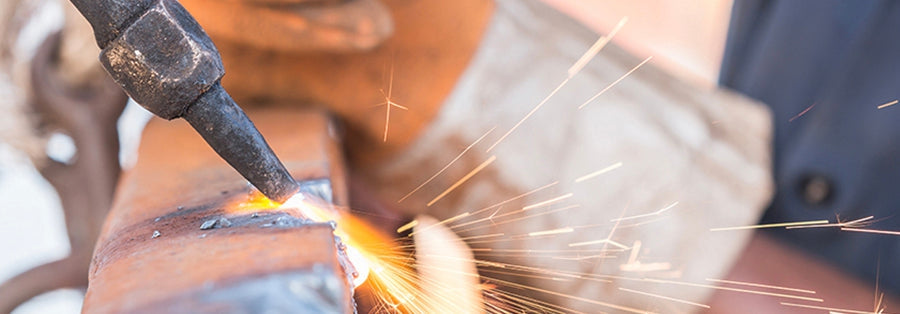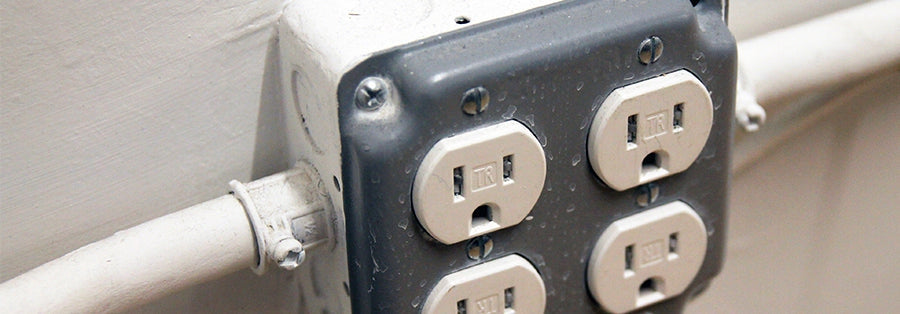For most welders who work out in the field, a welder/generator is the heart of their equipment. Why isn’t it the brain, especially with how smart these machines have gotten? Well, that’s because some chickens can go up to 18 months (about 1 and a half years) without a brain. And you can’t go that long without a welder/generator if you’re working away from a power source. So, it’s the heart. And hey—you just learned a great fact about chickens, too!
But enough about how long poultry can survive without a noggin. This article will cover some essential tips and tricks to make sure the important heart—your engine-driven welder—will live a long and fruitful life.
Power Needs
While most of the tips and tricks around extending the life of your welder/generator relate to regular maintenance, the first step you should take is understanding how much of a load your engine-driven welder can handle.

If you’ve yet to buy your machine, this step is particularly important as you’ll want to make sure you’ve got the power needed to run all the equipment you want. If you already own a welder/generator, it’s still important to know how much equipment it can run.
To easily calculate your machine’s power capabilities and your requirements, check out our excellent guide here.
The Book of Secrets
Can you imagine if everything in life had a user manual? Something that clearly explained the secret to happiness, or puberty or how to successfully ask out your first crush. Yet every welding machine from a quality brand comes with its own amazing book of secrets, and some people don’t even read it!
Your welder/generator’s user manual has every important detail you’ll need to know. You’ll find out what type of oil you should use, the correct filter size, the advised maintenance cycle times—heck, maybe even the secret location of Atlantis!
Every machine is different. So, while the tips within this guide are essential, you’ll often need to find the exact details in your user manual. If you ever lose your user manual, most welder/generators have the important information printed somewhere on the cover. For instance, with the Bobcat 225, you can find the critical information from the user manual printed on its top opening access panel. As a side note, the Bobcat 225 also has a $1000 rebate right now for a limited time. For all the top brands like Miller and Lincoln, you can find digital copies of all their user manuals online.
Mechanical Life Blood
Air and blood: Those are the two essentials that constantly keep your body chuggin’ along. Some of you might also include alcohol in that list, but as we’ve already proven in this article, a few beers don’t make you a better welder. Now, what does blood and air have to do with welder/generators?
Everything! Because just like your body, your welder/generator relies on air and its own form of blood to survive. That latter part is, of course, oil. Oil lubricates all parts of the engine, so your machine doesn’t explode from metal-on-metal contact—and “not exploding” is usually first on the list for what you want in an engine. Plus, many engine-driven welders also use oil to cool the engine.

Oil-related issues are a big reason that many welder/generators end up in an early grave. All engine-driven welders need oil changes after a certain amount of use. Your user manual can tell you the exact timeline. Some modern welder/generators, like the Miller Bobcat 260, have a countdown that will let you know when the next oil change is due. This is useful since most neglected oil changes are caused by forgetfulness. As a side note, the Bobcat 260 currently has a $500 rebate for a limited time.
Breathe In, Breathe Out
Besides clean oil, welder/generator engines also require air. If that becomes blocked, your machine might start running with a fuel mixture that’s too rich in fuel, which can cause performance and mechanical issues.
Especially if you’ve been storing your welder/generator over the winter, make sure to take a moment and clean out all the dust and debris. If you store your welder/generator in a shed or barn, put some mice protection around it. A lot of welders claim that putting dryer sheets around your machine can keep the vermin away.
Many professionals will use a compressed air machine to blow the dust off their welder/generator. While this works excellently, be careful about blowing into fans if your machine has them for cooling off electrical components. If the fans are spun quickly while the power is off, they can create a back current that can damage the electronics. The easiest solution is to keep the fan blades from spinning with a finger while you clean them off.
Since the air is never entirely clean, all welder/generators use an air filter to block out dust and particles that would damage the engine. It’s important to change out your air filter according to your user manual’s listed timeline. If the air filter becomes clogged, it’ll restrict the flow of air to the engine.
For instance, the Miller Trailblazer 325 has an incredibly useful feature that adjusts its air/fuel ratio depending on your current engine speed and load. This results in better efficiency and fuel cost savings for you. However, if the air or fuel filters become clogged, it can prevent the machine from achieving the correct ratios. If you’re interested in a Miller welder/generator, the Trailblazer 325 has a massive $2,000 rebate right now. That’s the biggest rebate in the entire Build with Blue promotion.
Other Filters
Besides the air filter, most welder/generators also have fuel filters and oil filters that need to be changed out regularly. You can see how often the filters should be switched out in your user manual.

There are many different types and sizes of filters. Make sure you check your user manual.
As the oil begins to lose its viscosity from use, impurities will appear. When the oil passes through the filter, these impurities are collected and removed from the stream, allowing clean oil to continue to the rest of the machine. If the filter isn’t replaced, these impurities will eventually build up and block the filter, restricting the flow of oil. This can lead to metal-on-metal contact and overheating, which can drastically reduce the life of your machine.
Breaking A Welder/Generator In
Like a pair of good working boots, an engine-driven welder needs a bit more special care during the first couple weeks of use (generally the first 80 hours)—but check your manual for specifics). During this time, most machines will consume oil faster than normal. You’ll need to check your oil levels every few hours, adding more oil if needed (again, check your manual for the specifics of your machine).
Also, it’s recommended to be careful with idling during this time, especially with diesel welder/generators. Most machines are preset at accurate idling speeds, but if your environment differs from the average (such as hot or cold locations), you may have to make some adjustments.
Storage Mode
Whenstoring your welder/generator for an extended period, important steps should be taken to ensure you’re machine isn’t seriously impacted.

First, be aware that any fuel left in your machine for too long can cause issues. Some types of fuel will begin to gel. Others will evaporate, causing residue build-up on the engine parts. Some machines will recommend using fuel stabilizers, so make sure to check your manual. If you’re going to be leaving your machine unused for more than a couple of months, most brands recommend you remove any leftover fuel from the welder/generator.
Finally, make sure you use a cover when storing your machine. Dust can murder electronic components. Having a quality cover will make cleaning easier and help prevent serious overheating problems.
With the right care, your welder/generator can last so long, it’ll begin to say things like “Back in my day, we could buy a candy bar for a penny!” It all comes down to regular maintenance, properly calculating power needs and storing your machine correctly when not in use. As mentioned in the article, Miller has some killer deals on their welder/generators right now. Check out their full Build with Blue promotion here and see some of their featured engine-driven welders below.





